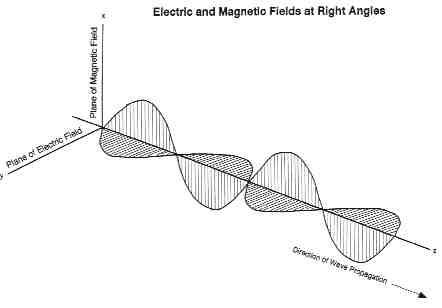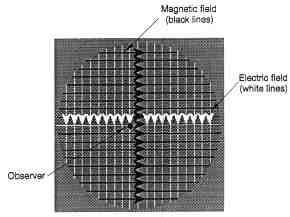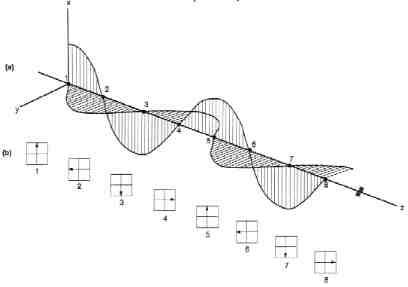
If electromagnetic waves meet no barriers as they travel through an idealized empty space, they travel in straight lines. As mentioned at the beginning of this chapter, stationary electric charges produce electric fields, and moving electric charges produce magnetic fields. Thus, there are two components to an electromagnetic wave—the electric field and the magnetic field. In free space, the directions of the fields are at right angles to the direction of the propagation of the wave.

The drawing below shows part of a wavefront as it would appear to an observer at the point indicated in the drawing. The wave is moving directly out of the page. One-half a period later, the observer will see a similar field pattern, except that the directions of both the electric and the magnetic fields will be reversed.

The magnetic field is called the magnetic vector, and the electric field is called the electric vector. A vector field has both a magnitude and a direction at any given point in space. The polarization of electromagnetic waves is defined as the direction of the electric vector. If the electric vector moves at a constant angle with respect to the horizon, the waves are said to be linearly polarized. In radio wave transmission, if the polarization is parallel to Earth’s surface, the wave is said to be horizontally polarized. If the wave is radiated in a vertical plane, it is said to be vertically polar-ized. Waves may also be circularly polarized, whereby the angle of the electric (or magnetic) vector rotates around an (imaginary) line traveling in the direction of the propagation of the wave. The rotation may be either to the right or left.
Circular Polarization

Radio frequency radiation from extraterrestrial sources may be linearly or circularly polarized, or anything in between, or unpolarized. The polarization of the waves gives astronomers additional information about their source.